Ontario plates have long been criticized for their repetitive, unimaginative design and predictable colour combinations over the past fifty years. The earlier decades are a little more eye-catching. But even when Ontario’s decision-makers ventured away from blue, white or black backgrounds, they generally opted for the safety of colours like yellow or orange. I look at other provinces that tried brown (New Brunswick in 1928 or Saskatchewan in 1930) or teal (Quebec in 1928). These plates make me turn green with envy (Prince Edward Island, 1928).
Red was a reasonably-common background colour in Canada and Newfoundland through the depression and second-wartime eras. Newfoundland and B.C. did it in 1930, Alberta in 1935, and Saskatchewan in 1934 and 1941. Ontario ultimately tried red paint on its passenger plates, for the only time, in 1937.

The plates were gorgeous at first sight, coming out of the envelope. The contrast was high, the numbers easily legible, and Loyalists appreciated the twin crowns. Yet red never again appeared on an Ontario passenger plate. It was used for seasonal truck plates in the 1960s, and eventually became exclusive to diplomat plates. The paint certainly lasted the one year of service for which the plates were designed. Many carefully-stored 1937 plates still retain their bright red colour today. It’s a mystery why Ontario never again took the red route for its passenger plates.
Unfortunately for we collectors, the red paint tended to oxidize with exposure to the elements. Moisture, even in modest amounts, caused the red finish to oxidize to a peach colour, and eventually, beige. This degradation looks like it could be sun-triggered fading, but even barn-find 1937 plates show this discolouration. A lot of them retain their bright red colour on the rear side, where they were more protected. It's a tragedy to many collectors.

Years ago, I discovered that the oxidation can be removed, revealing bright red underneath. It was just a errant scrape of a fingernail that clued me in. I don’t know exactly what type of oxide it is, but it’s tough stuff and requires some elbow grease to remove cleanly. But therein lies a caveat: While you have to be rough in taking the oxide off, you also risk stripping the white paint from the numbers. This means that you can’t just rub the face of the plate with a cloth if you want to restore it.
I took to using a Pink Pearl eraser in my early preservation efforts. It rubbed the oxidation away, and I could avoid damaging the white numbers. But the erasers were too flexible to get into the corners and crevices that surround the crowns, province name, and year on the upper portions of the plates. That made the emergence of the red colour inconsistent. It looked a bit better, but there was lots of room for improvement.
A few years ago at an ALPCA Convention, I attended one of Chuck Sakryd’s plate-cleaning seminars. He had all kinds of tips. The most useful among them, to me, was the use of “Color Back,” a Turtle Wax product. It gets rid of paint oxidation, as Chuck demonstrated. Essentially, he was rubbing off the top layer of oxidized paint to reveal the true colour underneath. I wondered if this could be a better way to tackle the 1937 problem in Ontario.
The selection of wax and car cleaning products is a lot better in the US than it is in Canada, so on my way home from that convention, I stopped at every Auto Zone / Advance Auto / Lowe’s store that I saw, but I never saw any Color Back. Some online sleuthing told me that it had been discontinued. So I bought an expired bottle on eBay, and tried it put.
Color Back did cut through the oxidation, although the amount of polishing depends on how thick the oxidation layer has become. I wouldn’t need the Pink Pearls anymore, and I wouldn’t have to press with as much force. Color Back was effective enough that I could use a Q-Tip to navigate around the narrow areas to avoid the raised white characters. In the video below (4+ minutes with no narration), you can see how a single Q-Tip can pull the oxidation away.
I used a finger surrounded by a soft cotton cloth to rub away the oxidation when there was enough space between the characters. I used the Q-Tips mostly in the crannies around the characters. I start one side of the plate and work my way across. The plate shown here took about 2 ½ hours to clean and polish. It’s not an easy process. But if you pick away at it over a couple of days, it might seem less monotonous than doing a straight hours-long cleaning session.
After I had gone through most of my Color Back, I decided to try the closest alternative: Rubbing Compound, also a Turtle Wax product. As it turns out, it’s essentially the same stuff, with the same cutting power, and it’s just as polishable. However, I’ve found that the Q-Tip approach takes a little longer with the Rubbing Compound. The end result is the same.
I have found that 1937 Ontario plates will tolerate a brief bathing in oxalic acid. The acid tends to react with iron in red paints to turn it into iron oxide, which is brown, but if you keep the immersion to just a few minutes, it won’t fade the red paint, and will still get rid of rust stains. But the big bonus is this: Oxalic acid softens the beige oxidation, making it easier to rub away with Color Back / Rubbing Compound and a cotton cloth. I’ve tried it both with and without a prior acid bath. Treating it with acid first, however briefly, makes a significant difference.
I’d been waiting for some time to find a 1937 plate in need of preservation. Last month, I acquired a pair of 1937 dual-purpose plates. I almost didn’t take them because they were badly faded in the picture. But I reasoned there was a chance that they were cleanable... maybe even enough to upgrade my collection.
When they arrived, they were in “good minus” condition to me: Just a hair above being fair. I was on a mission, and I cleaned one of them during a single marathon session. I took pictures after cleaning each section, which you can see below. The end result is a solid “very good,” having been polished to a shiny gloss.
I kept watch over the gloss of my cleaned plate for a few weeks before writing this article, just to make sure that the shine would last. Non-polishing products like WD-40 or coconut oil are prone to evaporation, leaving the plate dull and faded until it is re-coated with oil in a repeating cycle. But the vivid colour and sheen of the ‘37 plate shown here is undiminished several weeks later, just as it has been with other plates that I’ve tried.

So that’s the story: You can bring the shine back to your faded 1937 plates, if you’re patient and careful. Some final tips:
Clean any dirt off with soap and water first.
Drop the plate in an oxalic acid bath to soften the oxidation. Keep a constant watch on it, and don’t leave it for longer than 5 minutes. This alone will not make a faded plate brighter. You’re just prepping it.
Cut a square cloth from an old cotton T-shirt.
Add a dab of Turtle Wax Rubbing Compound onto the plate, but not near the numbers. In fact, you shouldn’t really touch the white paint of the numbers at any time.
Use a finger to rub the compound in little circles with the T-shirt cloth. With each pass, you’ll see some of the beige oxidation disappear, revealing more and more of the red paint beneath.
Eventually, the section of cloth where you’re rubbing will become saturated with compound. The cloth will become too slippery to lift the oxidation well. Stop rubbing. Squeeze the excess compound from the cloth onto the plate. Then switch to an unused part of the cloth. Resume rubbing the compound. You need a little friction from the fabric to cut through the oxidation. So every minute or so, you’ll have to move to a clean part of the cloth.
Use a Q-Tip to clean crannies in the numbers and legends (like the insides of a number 8, or the inner corners of an X, and all around the small characters of the legend).
Once you have the red colour revealed in a small section of the plate, polish it with a dry part of the cloth, or a dry Q-Tip. You can press down with some force without ruining the red paint, but be careful not to do this on areas of white paint.
Move to another section and continue. This took me over two hours per plate. It’s not worth the time for a mere trader. Save your effort for a keeper.
Here's one final look at the before-and-after. My expectations were low when I acquired this plate, but once it was clean, it upgraded my collection!








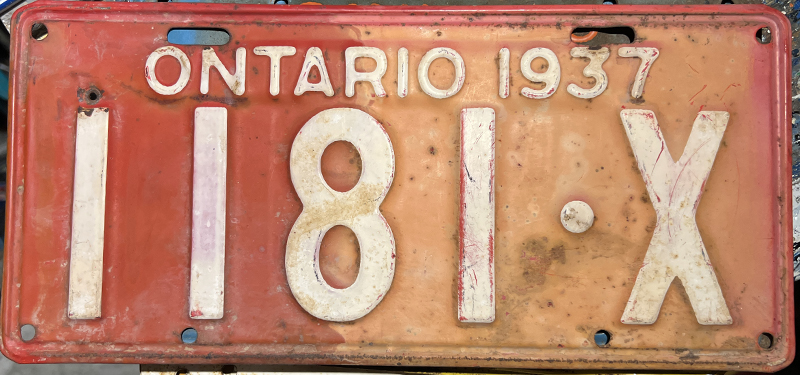

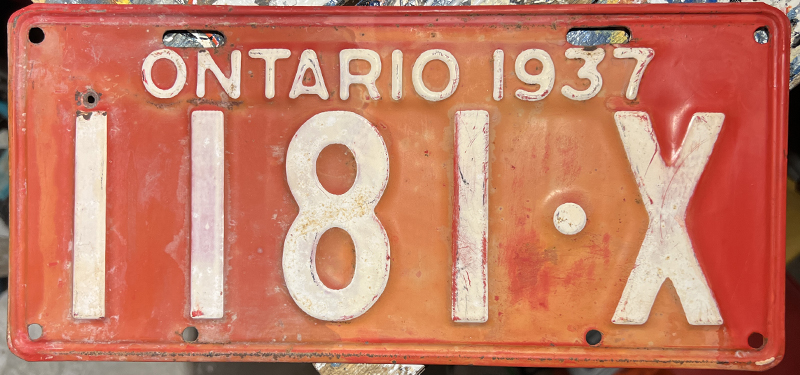



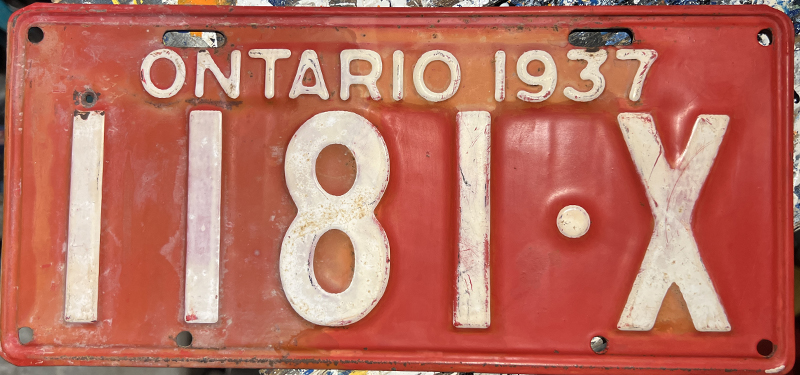



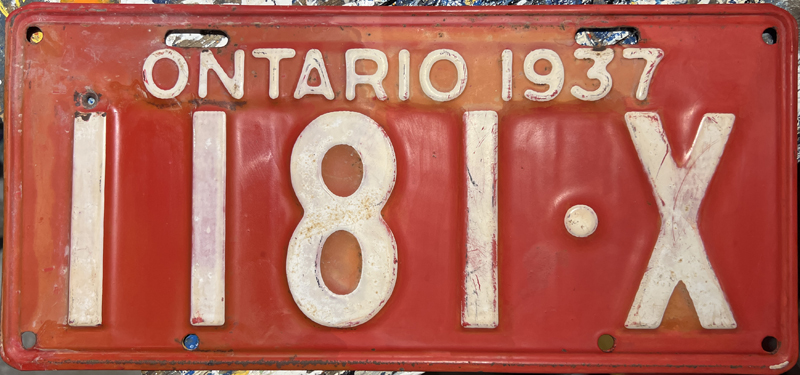

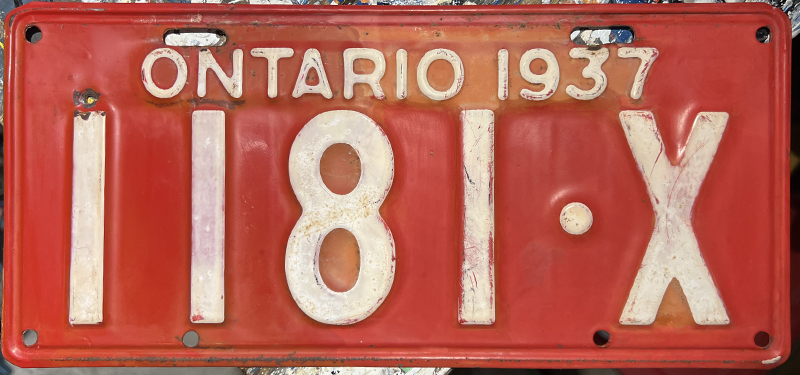

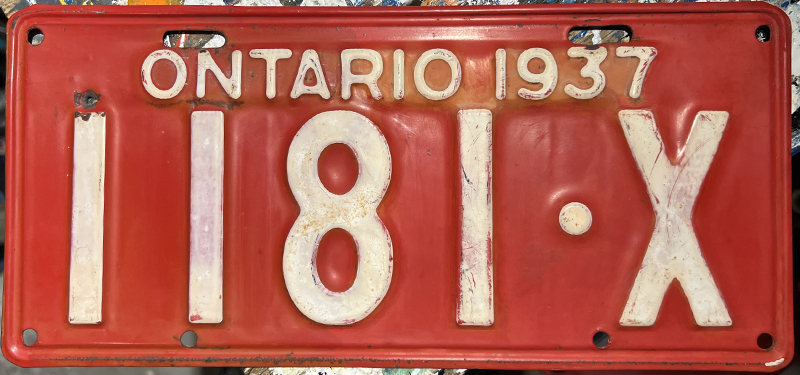

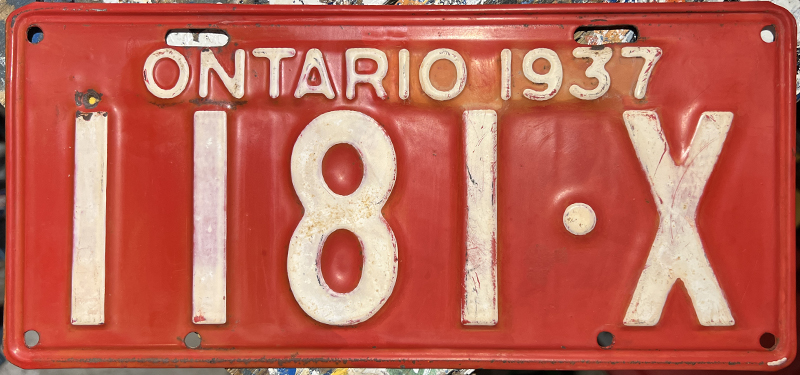


Comentarios